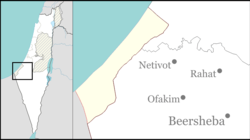On 14 March 2024, an attack occurred on the Kuwait Roundabout east of Gaza City, killing at least 21 people and injuring 155 others, according to the Gaza Health Ministry. [4] [1] Al Jazeera reported some wounded were left bleeding on the streets for hours. [26] Others were taken to Al-Shifa Hospital, though some of the victims did not receive treatment due to a lack of staff and supplies at the hospital. [27] [28]
Survivors of the attack asked why aid trucks were brought into northern Gaza at all if aid seekers were just going to be shot. [29]
Responsibility
Gaza Civil Defense spokesman Mahmoud Basal stated Israel was responsible for the attacks. [4] An Al Jazeera correspondent and testimony collected by the Euro-Med Monitor said that the firing came from an Israeli helicopter, [2] and later Al Jazeera reported that Israeli tanks fired indiscriminately. [26] Witnesses stated that Israeli tanks and a helicopter fired live ammunition at the aid seekers. [30] Mohammed Ghurab, the director of emergency services at Al-Shifa, stated people had been hit by "direct shots" from Israeli forces. [31] [3]
Following the attack, the IDF released a video showing an armed individual, alleging that Palestinian gunmen were responsible for the high number of casualties. A Euro-Med Monitor investigation concluded that the gunfire depicted in the video appeared to have occurred at the Dawla Roundabout, roughly two kilometers from the Kuwait Roundabout. Bullets from the dead and wounded in these attacks were 5.56 x 45mm NATO bullets, which were discharged from Israeli army-issued weaponry. [32] [33] [34] The Gaza Media Office stated the attack was part of a "series of massacres and brutal attacks against the defenceless civilians". [35]
The Israeli military said "no tank fire, airstrike or gunfire was carried out toward the Gazan civilians at the aid convoy." [36] According to the IDF's account of the 14 March attack, Palestinian gunmen tried to prevent looting by firing at the crowd. They stated that an hour before the convoy's arrival, armed Palestinians opened fire on civilians waiting for aid, and that the shooting continued during the looting of the trucks, resulting in civilians being trampled and run over. [37] [38]
